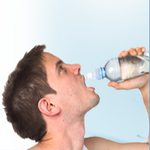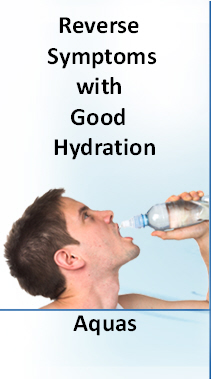This is the third in a series of investigations about the impact of dehydration on the prospects of recovery from Parkinson’s symptoms. In a Parkinsons Recovery Radio show interview, naturopath doctor John Coleman discusses the importance of taking Aquas for the success of his own personal recovery from Parkinson’s disease. In a recent post here on the Parkinsons Recovery blog, Jaraslov Boublik PhD answers questions about hydration in general and the implications of dehydration for the prospects of recovery.
This post constitutes third in this hydration series which features a Q&A with Leonie  Hibbert who is a co-developer of the Aquas along with Dr. Boublik. His previous discussion prompted questions from members of my audience who listened to my interview with him. In this interview, I ask Leonie Hibbert the questions from listeners which are listed below.
Hibbert who is a co-developer of the Aquas along with Dr. Boublik. His previous discussion prompted questions from members of my audience who listened to my interview with him. In this interview, I ask Leonie Hibbert the questions from listeners which are listed below.
- How do I know I am dehydrated?
- What are symptoms of dehydration?
- I drink water all the time but I am still thirsty all the time. Why is this?
- How can taking a few drops of this homeopathic remedy every day help hydrate the body?
- Would it help to increase the number of drops I take every day? Isn’t more better?
- How did you determine what ingredients to include in the bottles?
- If I am a man – can I take the female Aquas or vice versa?
- If someone is very ill, can they take this homeopathic remedy and if so, how many drops should they take?
- What are the side effects of detoxing from getting better hydration?
- How do you know the Aquas work?
- How long does a bottle last?
- Why can’t I solve the problem of dehydration by simply drinking more water?
- Why do so many people with Parkinson’s symptoms take Aquas?
- Will Aquas help people with diabetes?
- Why do you recommend a break of 2 days every week when taking this homeopathic remedy?
- Are the Aquas FDA approved?
- How do you know the Aquas are safe?
- Who manufactures the Aquas?
- Is a doctor’s prescription required for the Aquas?
- Will the Aquas help with dry skin?
- Do I have to take the Aquas with apple juice?
- Is it ok to take the Aquas with breakfast?
For further information visit:
www.aquas.us
Robert Rodgers PhD
Founder 2004
Parkinsons Recovery
Road to Recovery from Parkinsons Disease
https://www.parkinsonsdisease.me







